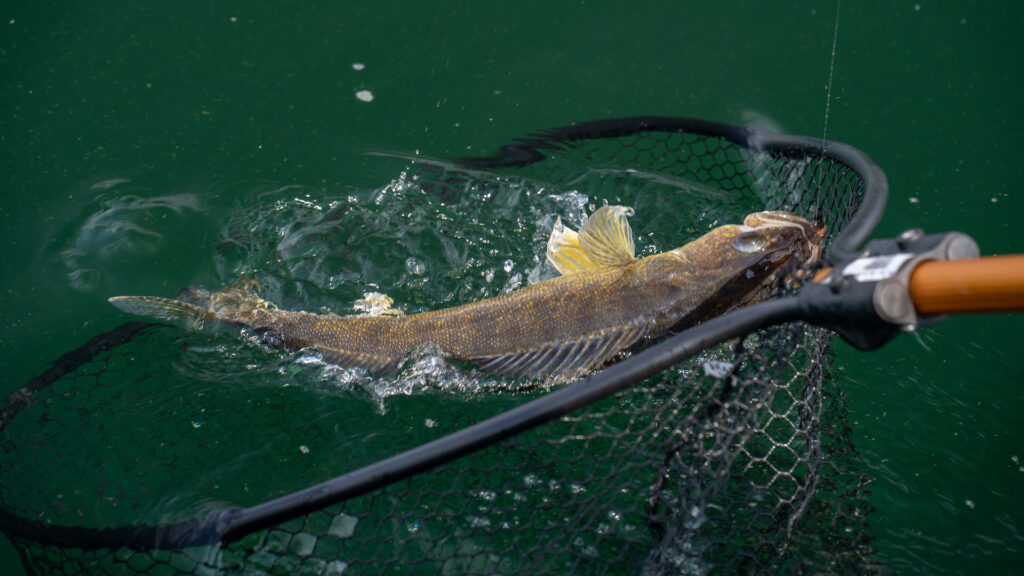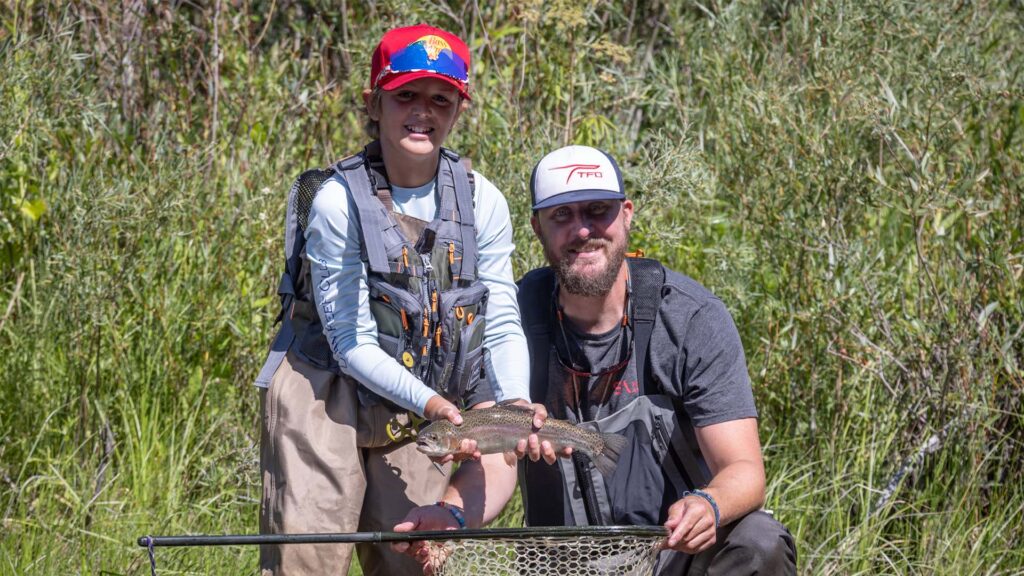It’s an exciting time for Captain Gary Dubiel and other east coastal and guides and anglers. As we say goodbye to July and turn the page to August, water temperatures are increasing, more baitfish are moving towards estuaries, and the summer crowds are slowly going back to their homes. Bull redfish season is here.
I was fortunate enough to catch Gary on a rare day off, as for the next 2-3 months, he’ll be on the water with clients pursing large adult redfish – or bull reds – that make their way into his fisheries. Gary breaks down the annual migration of bull reds to coastal North Carolina and how he finds and catches these fish.
Sounds and looks like the bull redfish are on the move in your area in coastal North Carolina. For those new to targeting or interested in targeting bull reds, can you talk about what it is these fish are doing? Are they spawning? What drives them in (temperature, water levels) to your area in coastal North Carolina?
The bull reds here are very migratory. They’ll be in the ocean most of the year. They’re in the process now in late July where the vast majority of them are shifting from the ocean into the estuary into the Pamlico Sound primarily for the purpose of spawning.
The spawning rituals itself which usually occur on the full and new moon phases are very brief, and the rest of the time the fish take full advantage of the food sources so they are perpetually feeding.
Every year is a little bit different and it can be hard to predict on how quickly they move in. Some years you’ll see fish in abundance by early/mid July, some years you’ll see fish a little bit later, but usually once you get into the first part of August, you’re going to see an increasing number of fish pushing into the river and that will continue into a few weeks to follow and stay peaked usually until the end of September. As the temperatures drop, the bull reds will move back out into the ocean.
Does water temperature have any effect for these migratory patterns?
There is some temperature orientation. During summer, the water temperature is obviously going to be very hot, so there’s not a lot of fluctuation, but your fall temperature, depending when your cold fronts come in, has a tendency to push the bait out, thus the volume of fish. Usually when you see the water temperature drop down into the mid 60s is when you see that migration move back out.

TFO Ambassador Brad Whitaker with his hands full. Photo by Gary Dubiel.
When the bull reds are in your area spawning/foraging, how do you look for them? Is it similar to looking for normal redfish looking for crabs in the flood tides, etc. in that there are more visual signs to look for like tailing, grass movement, etc?
No; totally different ballgame. Normal redfish and adult redfish have nothing to do with each other as far as their habits go – especially here in coastal North Carolina. Once adult redfish come into that migratory adult population, they become much more of a pelagic fish than a normal redfish that is more estuary oriented – very short distances.
There was actually a radio tracking study here years back. On average, an adult redfish swim 25 miles a day. That 25 miles doesn’t necessarily have to be a straight line, but they are perpetually in motion just like a school of tuna would be. They are much more in motion, and that motion basically continues until they locate food, and then they eat, and then they’ll move until they find more food, and so on. They are perpetually moving day and night and anytime they intersect food, they eat.
So not really much sight fishing opportunities?
Our waters are very tan and bottoms are very dark, so it would be very rare if you ever looked in the water and saw one. What we’ve been able to do here is basically develop the ability to look for those fish by looking for the food source.
Bull redfish will eat pretty much anything. They aren’t like the typical Carolina redfish that is tailing and looking for a crab. Bull reds are primarily going to be fin fish feeders, but they will also eat crab, shrimp, and anything that’s basically 18” and smaller than they are.
Because of the way the food reacts when being chased by these big fish can help you locate those fish and catch them. For example, if they find a mullet, mullet move in a straight line and they move very fast, and its usually in much shallower water – which makes for some really cool signs to look for because its very explosive – there’s a lot of splashing, a lot going on. But the issue then becomes – How do you get to these fish? They’re moving so fast you can get in front of them it doesn’t make any difference.
The one thing that is very helpful in all that is menhaden – Because when they get chased they form a big bait ball and they don’t go anywhere. Looking at big schools – literally acres of menhaden on top of the water – that bait ball is very tight. The spinning/splashing on top of the water gives you an indication that there’s fish there. You can also look for things like flicks, you can smell the oil from the fish being eaten, etc. Big redfish can feed anywhere from two feet of water to twenty feet of water which is as deep as the rivers in this area. So subsequently, they can be anywhere and everywhere. They can be very difficult to see feeding but if you see that bait ball on the surface, that bait can be your best indicator of where those fish are.

A great example of a bait ball taking place on the surface where bull redfish are likely to be hanging out for a meal. Photo by Gary Dubiel.
Let’s say you’ve located some bull reds, what set ups, both fly and conventional are using to go after these guys?
For conventional tackle – I’m using the Inshore Series. Medium-Heavy and Heavy action rods. So the 705-706 models. Mostly what we’re going to be using to catch those fish are pop-n-corks and soft plastics. The reason we use those (pop-n-corks) is that it makes noise and it draws the fish to the bait just like the fish that are constantly moving and feeding.
Very different from a juvenile redfish where they might be tight at to the bottom, bull reds can be at mid-water column, they can be on top of the water, or they can be all the way on the bottom. We want to try and pull the fish to that bait so we’ll use very large pop-n-corks and large 5-6 inch long soft plastics that catches their attention. It’s the most effective way to catch those fish when we’re fishing tackle.
I’ll match those rods with 4000-5000 series reels with 30lb braid goes on those rods nicely and the rods have the backbone it takes to fish those well.
We do throw some topwater baits. The Medium Heavy does really well there. We’ll also do some swim baits using the Heavy action Inshores. Large 6-8 inch swim baits on a jighead will occasionally produce as well.
For Fly – Axiom ll-X 10wt. You need that extra backbone compared to the popular 8wt because 1) You’ll never throw the set up and 2) You’ll never land the fish. I match it with the TFO Power Reel.

TFO Advisor Blane Chocklett getting a taste of coastal NC bull redfishing with guiding assistance from fellow TFO Advisor Gary Dubiel. Photo by Gary Dubiel.
How big do the bull reds get?
A lot of places will say a bull redfish is 36-38 inches. That’s not a big fish here. That’s a little fish. Our fish average 43-45 inches. They’re typically a pound an inch. We’ll catch fish in excess of 50 inches – So you’re looking at 50-60 lb. fish.
So in other words, you’ll have all you need on the end of a 10wt Axiom ll-X.
What about fly lines, leaders, tippet?
You’ll want an aggressive front taper floating line. I use the Scientific Anglers Titan Taper Line WF10F. For leaders, I go straight 20 lb. fluorocarbon for about 6 feet to the popping fly, then about 20-24 inches of 30lb fluoro off of that to the fly.
Flies?
You’ll want to do the same thing that you were doing with the spinning rod as you would on the fly rod – so that’s where my pop-n-fly comes in. You’re basically fishing a pop-n-cork and then 20-24 inches below that you’re fishing a large minnow style fly. Something oval that breaths well. I have my own menhaden style fly that I tie which is a slightly less weight, large oval baitfish pattern.

Capt. Gary Dubiel’s innovative Pop-N-Cork & Pop-N-Fly setups for both fly and conventional tackle. Photo by Gary Dubiel.
Any particular tips, tactics, or strategies for fighting bull reds and increasing the chances of getting the fish to the boat and not breaking off?
Don’t be shy of putting pressure on them. They’ll never surrender. You need to work the fish back to the boat (another reason why the 10wt comes in handy here). Typically, the fish will normally have a long run first, then you usually have 1-2 shorter runs, then the fish will bulldog you at the boat. Once you apply pressure to that fish’s head, keep that pressure on! A lot of my clients will yank up real hard, then drop the rod tip real fast, then if the fish is even able to drop his head and turn away from you, he’ll take right off again.
The way these fish fight, they want to get their head down and away from you. So a much steadier, constant pressure on that fish will beat that fish quicker. On a 10wt, you’re looking at 7-9 minute fight time on average.
Any other tips/suggestions you’d like to leave with our readers?
One thing I’d like to mention. We have a lot of folks that come from other places to fish here for bull reds that make the biggest mistake when fishing for these fish. Even if they’re in deeper water, they are extremely motor shy! So outboard motors can be horribly detrimental to catching those fish.
If you see those big schools of bait, approach those schools of fish with stealth. Stuff like coming downwind, using the trolling motor, using the trolling motor at lower speeds if you can get away with it makes a huge difference. Also, giving yourself a few hundred yards to start, then working in on those fish as low noise rather than rushing on top. If you’re treating it like albacore fishing where you see those bait balls and you rush in there with the boat, they’ll go to another zip code.

The man himself. TFO National Advisor Capt. Gary Dubiel taking in the view before heading out for a day on the water. Photo by Colorblind Media.
Gary Dubiel has been a TFO National Advisor since 2002. He currently lives in guides in the coastal North Carolina Outer Banks area through his guiding business Spec Fever Guide Service. You can find out more about Gary here.
![]()






